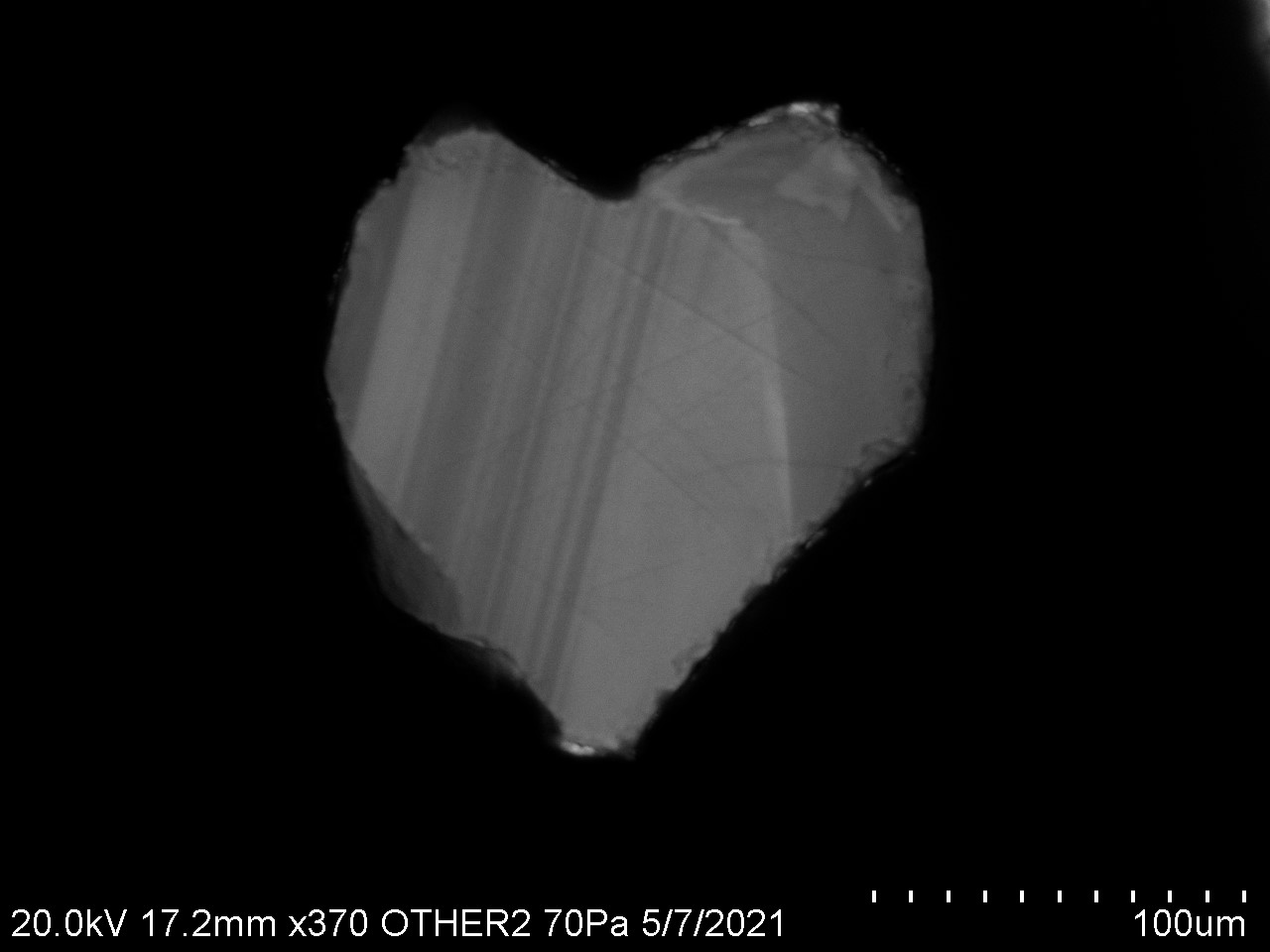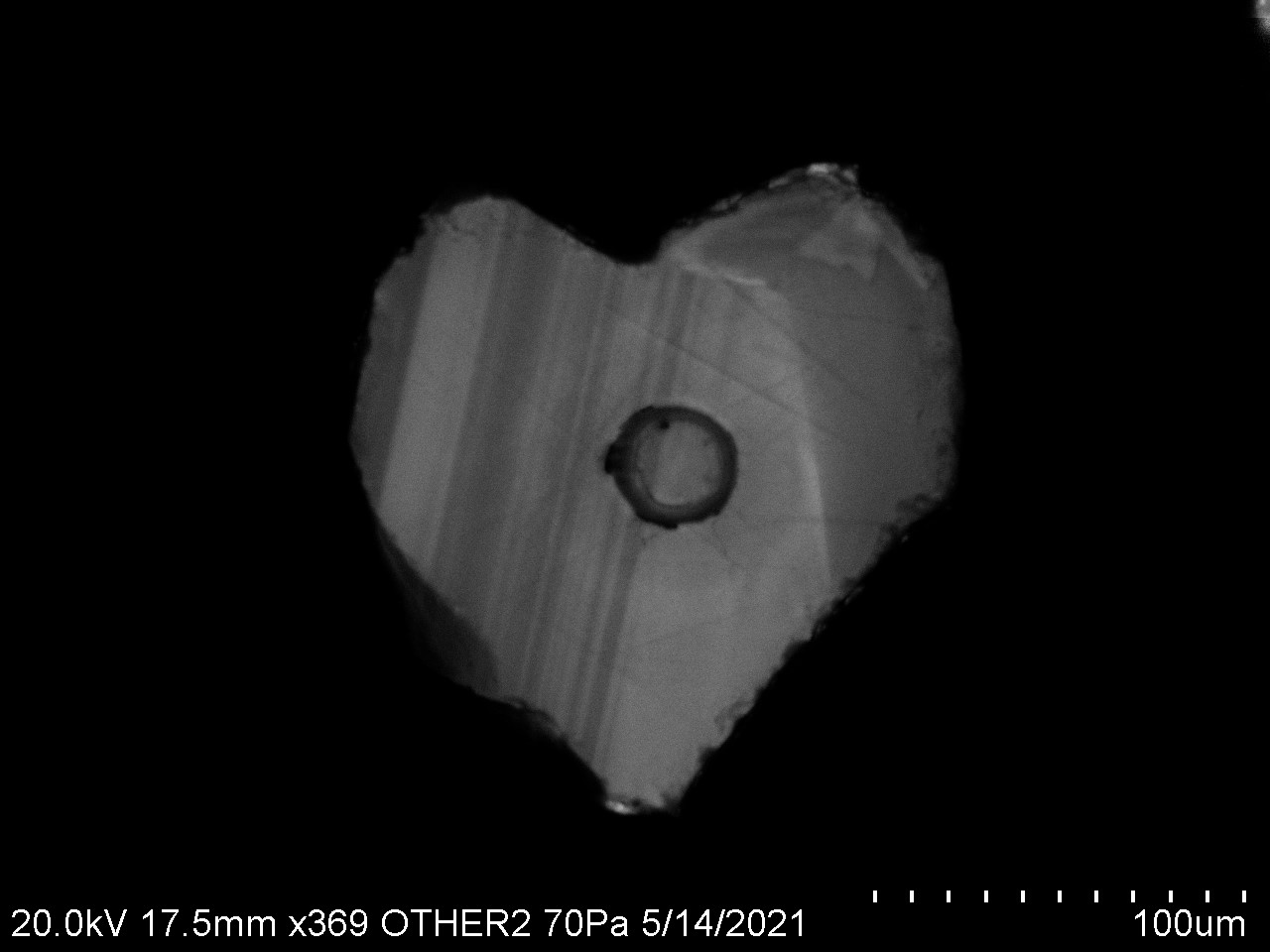

Cathodoluminescence images of a tri-axial zircon grain fragment, taken with a Scanning electron microscope (SEM). The grain comes from a gabbro-norite drill core from the Arianne Phosphate mine area, north of Lac Saint-Jean. Cathodoluminescence allows to highlight the internal structure of the zircons, variations in the concentration of luminescent elements (Hf, Y, P, U and heavy rare earth elements) resulting in different shades of gray.
The second image was taken after LA-ICP-MS analysis; the spot, about 30 microns in diameter, corresponds to the laser ablation area. The pulverised mineral is then sent to the ICP-MS plasma to be volatilized and ionized, in order to determine its geological age by measuring the abundance of its uranium and lead isotopes. The preliminary age given by the zircons in this sample is about 1007 million years.
Zircon grain selection: Jean David
SEM images: Julien Gogot

